The Big Three
These three power moves are compound exercises that work several muscle groups at once and can help improve overall strength and muscle mass gains. they just can’t be beat.
They are typically performed at the beginning of a workout, with isolation movements afterward, and usually with each main movement performed on different days so as to allow for maximum recovery between lifts.
Within this article, we will break down each of the main movements, with detail about form, variations, and purpose for each one of them.
The Bench Press
The Barbell Bench Press is perhaps the best overall compound upper body movement. When performed correctly, it works the pectorals, front deltoids, and triceps. When laying on the bench, put your hands on the bar slightly more than shoulder width apart. Anything wider than this will work the deltoids and the outer pecs more, and if done with too wide a grip risks injuring your rotator cuffs. With a narrower grip, you will work the inner pecs and triceps more, and the exercise turns into a Close-Grip Bench Press, a great movement for the triceps. You should lift the bar up over your head, then slowly bring it down to the lower part of your pecs, and then raise it up till it is over your head again.
You do not raise the bar straight, but rather in a J-shaped curve. This movement can also be done with dumbbells. Doing it this way allows you to make each side of your body work independently, and strengthens stabilizing muscles. The bench press is the fundamental key to success for any chest workout.
Many lifters employ a “suicide” grip. Why are they doing this? Well, often times, this grip allows them to get the bar closer to the wrist joint. If the bar rests in the back of the hand, switching to a suicide grip will indeed increase efficiency. However, this increased efficiency comes at a cost. Maximal muscle recruitment is decreased when the hands cannot fully “squeeze” what the arms are pushing. If you doubt this, take your one rep max on a standard barbell and compare it to a max taken on a fat bar. The results should be enlightening.
The long and short of it is that, so long as you put the bar at the heel of your palm anyway, the suicide grip provides no competitive advantage. Not only is a thumbs-around grip safer, it is more effective as well. You should literally try to “leave your fingerprints on the bar”; squeeze it as hard as possible..
BRINGING IT ALL TOGETHER
- Step 1: Set your grip width
- Step 2: Set your arch
- Step 3: Get tight: bend and squeeze the bar, take big air
- Step 4: Take your hand off, lower the bar down and pause
- Step 5: PRESS!
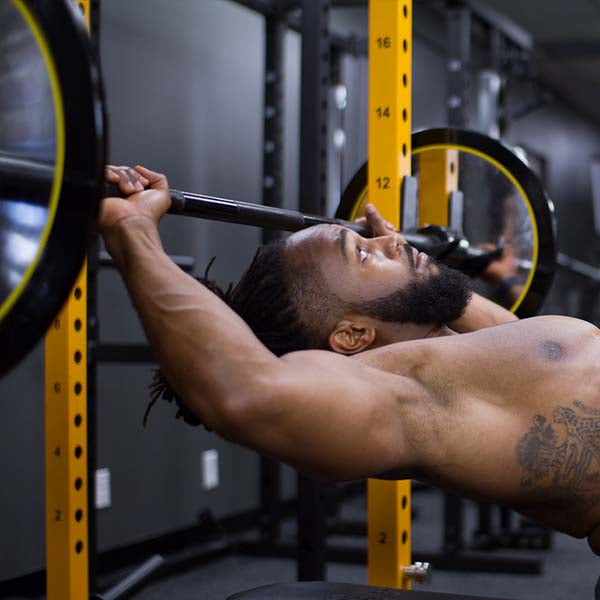
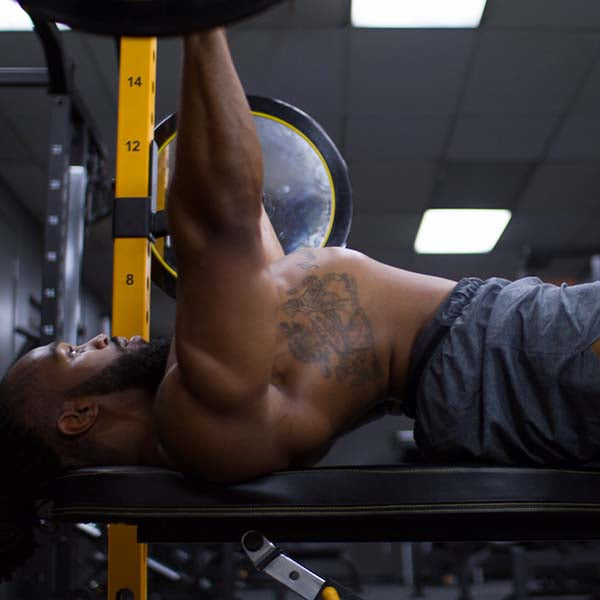
The Deadlift
No other movement uses as many muscle groups as when performing the Deadlift, although it is usually one of most neglected exercises. Perfecting your form is key to the deadlift, which works the traps, lats, lower back, glutes, hamstrings, quads, and calves. Many people prefer to wear a belt when deadlifting, and practice their form with low weight. Bend your knees, and bring them up close to the bar to keep your back straight. Like squats, it is extremely important to keep your back straight! To start the movement, push your legs downward and explode upwards standing up straight (and keeping your back straight at all times). Then throw your shoulders, back and your chest out to really work the upper back. Then slowly bend your knees, bend your waist forward (back straight again) and set the weight down to complete the rep. This movement takes some practice, and once again be careful to work on the form and not worry about the weight so much. With practice, you’ll get good at it and it will become a key part of your workout.
Hold the weight for a second at the top, with locked hips and knees. Then return the weight to the floor by moving your hips back while bending your legs. Rest a second at the bottom and repeat. Your lower back must stay neutral to avoid injury. Rounding it during heavy Deadlifts is dangerous for your spine. It puts uneven pressure on your spinal discs which can injure them. Always Deadlift with a neutral lower back – maintain the natural inward curve of your lower spine. The fastest way to increase your Deadlift is to improve your form. By pulling more efficiently, you can use more muscles and Deadlift heavier weights. This results in more strength and muscle gains. The best way to improve your form is by practicing Deadlifts with proper form.
DEADLIFT TECHNIQUE & FORM
Your build influences how proper Deadlift form looks like for you. If you have short thighs with a long torso, you’ll usually setup with lower hips than someone with long thighs and a short torso like me. So don’t mimic someone else’s Deadlift form unless you have the same build.
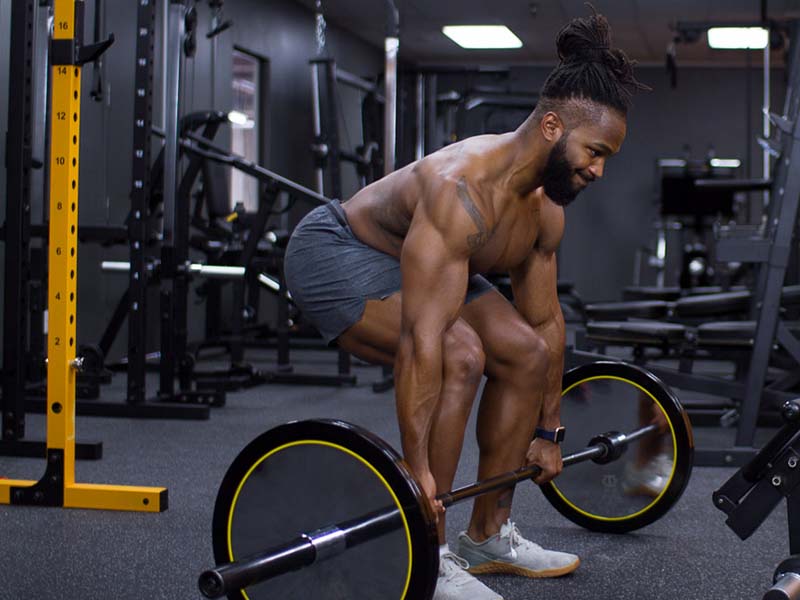
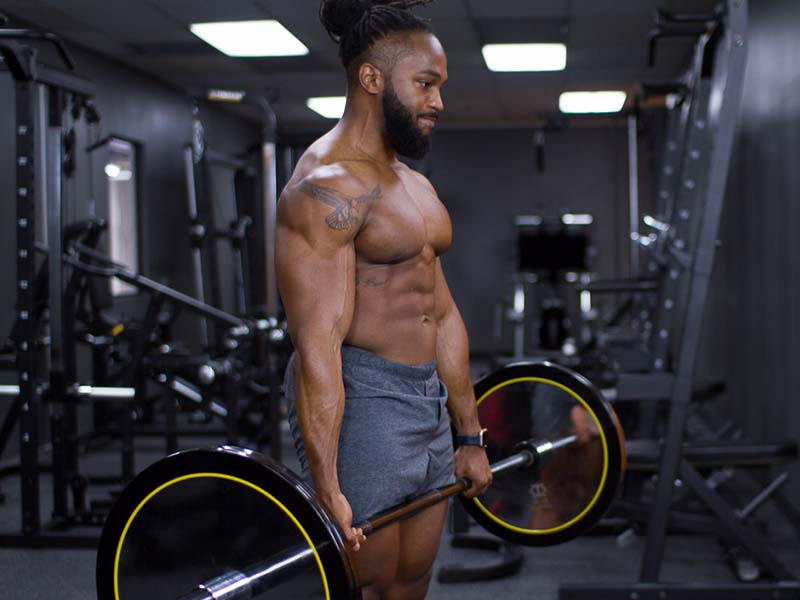
Deadlifts work your whole body. Your legs are the prime movers. Your back muscles keep your spine neutral. And your arms keep the bar in your hands. But since the weight is heavier than on any other exercise, every other muscles has to work too. Otherwise you can’t Deadlift the weight.
THE SQUAT
Studies have shown that doing large compound movements such as the squats, can have a positive effect on endogenous testosterone production, which can hep lead towards greater spikes in muscle mass and overall strength. Squats work the entire lower body, specifically the quadriceps, hamstrings, glutes, and the muscles that make up the calves. The standard position is feet shoulder width apart with the toes pointed slightly outward. When doing squats, the bar should rest between the rear deltoid and the traps. The back should be kept straight and the head up. Definitely use a belt and work hard on keeping that back straight. You will really work the muscles better if you can get low. Try taking a light weight and work on your form. Eventually, you’ll be getting parallel and even below parallel. But remember, do what’s comfortable and don’t push yourself too hard. With squats, get the form, and then get the weight. Go slowly, and your whole lower body will start growing.
The single most repeated coaching cue in powerlifting is “get tight”. If you know it what means, this is one of the best cues there is, period. If you don’t, you strain real hard, make some funny faces, and nothing really happens.
First, overall “tightness” mostly comes down to how you breathe. The most important thing you can do before you attempt a heavy lift is take a huge breath and HOLD IT IN. Holding in your air pressurizes your “core” which stabilizes the spinal column.
The more conformable the kinetic chain is, the less efficient the force transfer will be. For example, imagine trying to tow something around using a spring. Before you could move whatever it is you were trying to move, the spring would have to completely stretch out and “get tight” before any of your tugging and towing could amount to a damn thing.

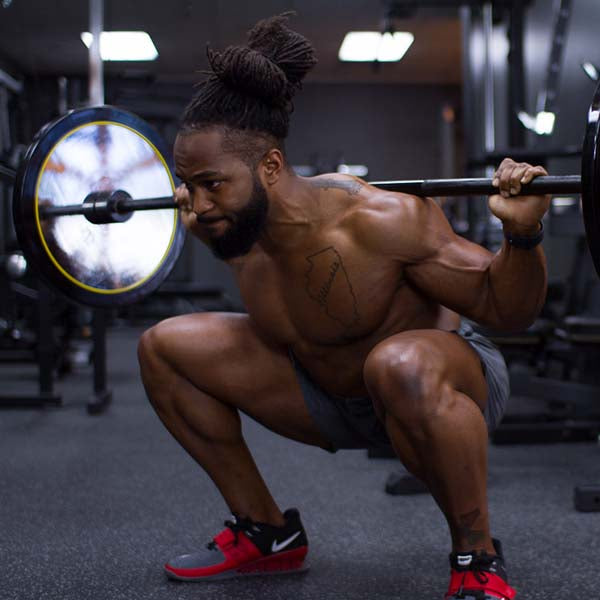
SQUAT TIGHTNESS
- Make sure your feet are set where you want them
- Set your whole back into extension by shoving your chest up
- Tighten up your lats by pulling down on the bar with your hands
- Take as big of a breath as you can and hold it in
- Set your head position
- Squat!













